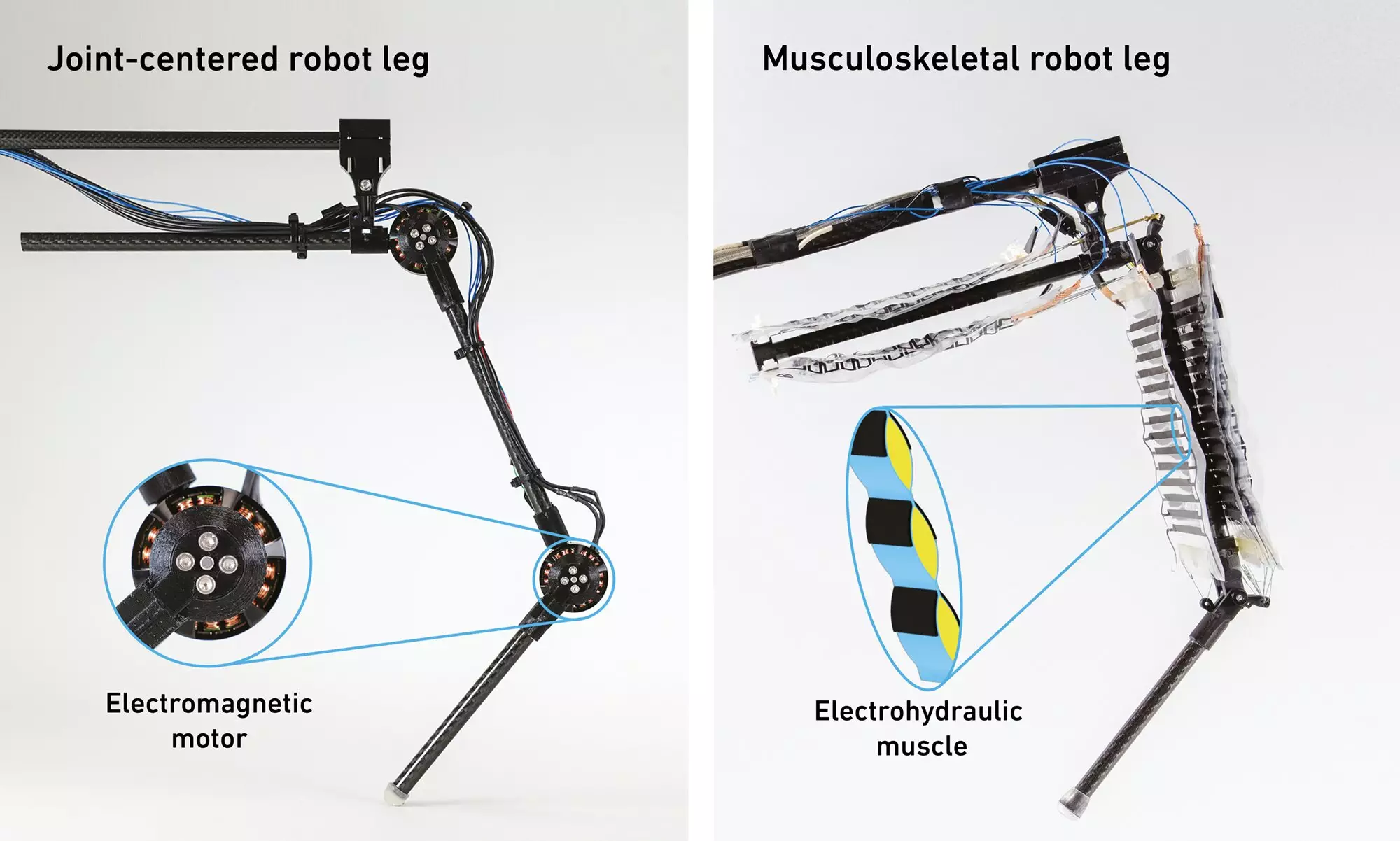For nearly seven decades, the evolution of robotics has largely been dictated by motor-driven designs, a technology that has remained fundamentally unchanged for over two centuries. These traditional robotic systems, while functional in factories and various other settings, have lagged in mimicking the sophisticated adaptability and agility of biological organisms. This disconnect between machines and their living counterparts has prompted researchers at ETH Zurich and the Max Planck Institute for Intelligent Systems (MPI-IS) to innovate. They aim to create robots that can not only execute tasks but also possess the fluidity and responsiveness of living creatures.
At the forefront of this research is a groundbreaking muscle-powered robotic leg, which naturalizes movement and enhances energy efficiency while operating as fundamentally different from conventional motorized versions. By harnessing the principles of biological movement, this new leg promises to elevate the capabilities of robots in ways previously thought unattainable.
The Science Behind Muscle Power
The innovative robotic leg developed by the team—a collaboration known as the Max Planck ETH Center for Learning Systems (CLS)—incorporates electro-hydraulic actuators, termed HASELs (Hydraulically-Actuated Soft Elastic actuators). Unlike the direct linear motion associated with traditional motors, these soft actuators mirror the movements of natural muscle groups. This design draws inspiration from how human and animal muscles operate, where extensors and flexors work in tandem to create dynamic movement.
These actuators utilize oil-filled plastic bags designed similarly to ice cube trays—each coated with conductive electrodes that respond to voltage changes. When voltage is applied, they create a static interplay, allowing the actuators to contract and expand energetically. This mechanism results in fluid, muscle-like motion that confers high mobility, enabling the robotic leg to jump and navigate an environment without reliance on sophisticated sensors.
Energy consumption has consistently been a thorn in the side of robotic technology, particularly for designs reliant on electric motors. Research shows that traditional motorized legs convert a significant portion of energy into heat—a constraint that necessitates additional cooling systems. In contrast, the muscle-powered leg demonstrates extraordinary energy efficiency by utilizing electrostatic mechanisms that minimize excess heat production. This capability allows for sustained operation without the encumbrance of traditional thermal management systems.
The uniqueness of the design lies not just in its enhanced energy efficiency but in its ability to adapt to varying surfaces. The system requires only two input signals for movement, akin to instinctual human responses. This contrasts starkly with motor-driven robots that rely on continuous feedback from sensors to adjust movement, making this innovation a promising leap toward more autonomous robotics.
One of the most remarkable features of this muscle-powered leg is its adaptability. Human beings instinctively adjust their movements based on the terrain (consider the different techniques for navigating soft sand versus hard pavement). The electro-hydraulic leg mimics this biological trait, allowing it to adjust dynamically upon landing based on environmental feedback. This ability to automatically respond and optimize its stance enhances its efficacy for real-world applications that require on-the-fly adjustments.
Beyond jumping and adaptability, this robotic leg allows researchers to delve deeper into the mechanics of machine learning and advanced control systems. As researchers expand on this initial design, the potential for creating robots that can traverse uneven terrain or perform intricate tasks grows tremendously.
As the CLS team looks to the future, the promise of muscle-powered technologies is just beginning to emerge. While the current model has limitations—such as tethering and restricted mobility—these challenges represent opportunities for further research and technological development. The team acknowledges that with time, they aim to overcome these constraints and to pioneer autonomous walking capabilities for robots equipped with artificial muscles.
This research signifies a departure from the paradigm of electric motor systems, paving the way for smarter, more versatile robotics. By prioritizing the integration of innovative hardware, such as soft actuators, the field of robotics is set to experience transformative changes that could redefine how machines assist us in everyday tasks.
As we stand on the brink of this new era of robotic potential, the question remains: how far can we push the boundaries of robotics if we continue to draw inspiration from nature itself? The collaborative efforts at ETH Zurich and MPI-IS may well answer that question, leading us toward a future where robotic companions not only work alongside us but are capable of moving with the same grace as living beings.


Leave a Reply